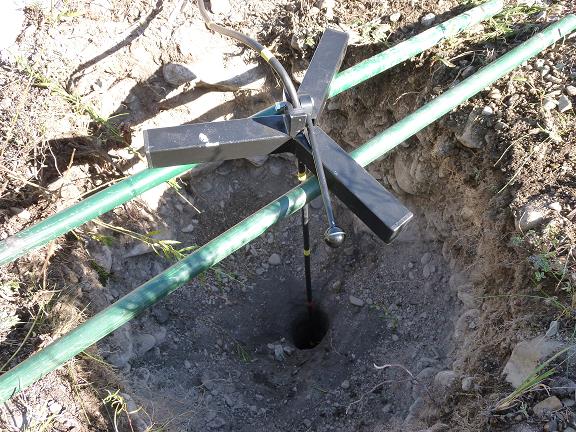7.4.3 Borehole measurements
Borehole measurements are useful to reveal the depth distribution of activity. Bores can be drilled and the detector probe be inserted as to make measurements at different depths. The attained depth resolution is of approximately 30 cm for no collimated detectors, and it can be improved by the addition of a collimation head. However, the addition of collimators increase the total diameter of the probe, thus requiring of a higher diameter bores, something that is not always affordable and representing a significant increase in the costs of preparation of the dwells.
Depth distribution is relevant for different in -situ applications. An accurate in-situ estimation of the areal or mass activity requires of knowing the distribution of activity through the depth, in order to make an appropriate calculation of the attenuation of the radiation inside the effective probed volume. Borehole measurements are a cost-effective alternative to calculate the volume of buried materials, such as uranium tailings, and a good basis to estimate the costs of clean-up operations by determining the volume of material to be removed for further disposal.
